If you buy via a link on this page, we may receive a commission, at no extra cost to you.Learn more
Fishing for wild trout can be one of the most rewarding experiences you can have as an angler. Trout fishing can also be some of the most fun you can have on the water. Trout can be found in lakes and rivers, but my favorite way to fish for trout is on a stream. Some think that the only way to catch trout is with a fly rod, but that couldn’t be further from the truth.
While you would almost always be better off using a fly rod for trout, not everyone has a fly rod or knows how to fly fish. So, how can you fish for trout without fly fishing? Well, it’s a lot like fishing for most other species of fish. But you need to understand a trout’s tendencies in order to catch them.
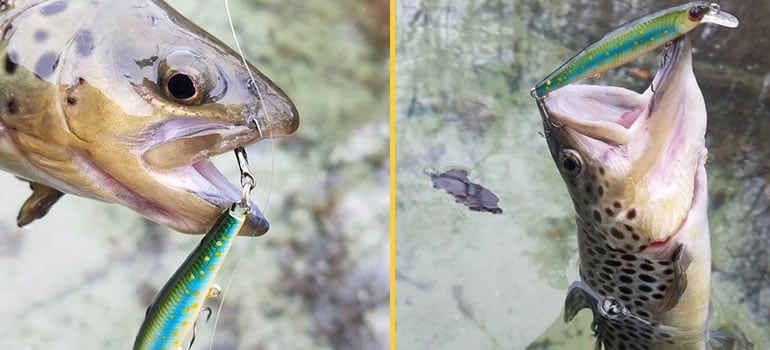
Through personal experience, research, and stories I’ve heard over the years, I’ve found 26 different tips and tricks for catching trout without a fly rod. It’s a lot easier than you may think and loads of fun. Try using these simple tips and tricks below, and you’ll be catching boatloads of trout in no time.
26 Tips & Tricks for Catching Trout without Fly Fishing
Before we get started, here’s one essential tip to know right off the bat: Trout often keep their eyes looking upstream, trying to spot something to eat coming down the current. So, when you’re first approaching the water, try to stay out of the fish’s line of sight. Spooking trout is the quickest way to have a day without catching any fish. Just remember, the hunt is part of the fun.
If you don’t have a fly rod, or don’t know how to fly fish, who cares? You can have tons of fun fishing for trout with whatever you have rigged up; whether it’s a beefy baitcasting rod, a slick spinning rod, or simply a stick with a line tied to the end. Using the tips below, you’ll be prepared to catch trout no matter what the situation.
1. Look for a Big Rock in the Middle of a Current
Once you spot this big rock in the stream, you’ll notice a calm pool of water just upstream from the rock where water is settling. This is a tried and true spot to find a trout.
What you’ll want to do is land your bait upstream from the pool, into an area that will guide your bait down towards the pool. If the presentation looks natural, a hungry trout is likely to snatch it up.
2. Find a Seam of White Foam
Another effective method is tossing your bait into a white foam line. This is an area trout love to target for food. It can sometimes be difficult to be as accurate as you need to be in order to hit a foam line, so keep practicing even after you’ve spent enough time on a hole. Catching trout is all about stealth and accuracy.
3. Approach and Cast with Stealth
Often in streams, you can sight fish, which is a lot more fun than just tossing a line in and wishing on a prayer that a fish is there.
If you can see fish, it’s time for your best blue heron impression. Approach with caution and be careful not to cast shadows. Remember, the trout are likely looking upstream if the water is moving quickly. If the water is still, you need to be even more cautious.
Duck down and stay quiet. Toss your line beyond the fish, not on top of it. If you land your lure right on top of the fish, they’ll spook and scatter immediately.
The idea is to let the bait drift down towards the fish, looking like a natural piece of tasty food.
4. Use the Dead Stick Technique

The dead stick is a classic technique that not a lot of people talk about or use. A typical dead stick technique features a soft plastic bait that either sits on the bottom or floats and moves with the current.
A stream with a nice natural current is the perfect place for dead sticking, which is simply dropping your bait and leaving it there. Take as much line out as you need to dangle the bait on top of the water.
If you’re using a dry fly, this technique could not be any simpler. Make sure you have freshly applied floatant to the fly (this will make sure it stays on top of the water) and toss it out to a place where the current will take it (hopefully) towards the fish.
If you need floatant, here’s a nice deal from Loon Outdoors providing both floatant and a holder.
If the water is calm, this technique will still work effectively with a dry fly. You can also try a plastic worm, or a real worm if you have one. Many different baits will work with the dead stick technique, but it helps if you can find a stream with moving water and can also sight fish for the trout.
If a fish hits the bait, the hook will be set for you, and you’ll likely have an easy fish—unless your hook set is so strong that it rips the fly right out of the trout’s mouth.
5. Don’t Set the Hook Too Hard
This is a good time to remind you not to go crazy with your hook set. If you are using a spinning rod, or any rod more powerful than a fly rod, it’s easy to yank the bait right out of the trout’s mouth. Trout love to nibble at your bait before fully taking it. They are not like bass who suck in an entire mouthful of water in order to eat your lure.
Trying not to set the hook too hard can lead to you waiting too long to set the hook. Don’t make the mistake of waiting until you know for sure the trout has taken your bait before setting the hook. This will lead to more missed fish than yanking the hook out of the trout’s mouth, something I’ve experienced that far too many times.
The last time I was fly fishing for trout, I set the hook as hard as I could, and the little brown trout came flying out of the water and smacked me right in the face. Luckily it was a tiny trout. Otherwise, I think the fish would have knocked me out.
The hook set should be quick, but short. As soon as you feel a tug, a short and quick decisive hookset will reward you with many fish.
6. Use a Bead Head Prince Nymph with a Bobber

One of the most popular flies for catching trout is a bead-headed prince nymph, and you don’t need to have a fly rod to use one.
A nymph is a very small fly that is meant to float below the surface of the water. Getting a nymph with a bead head allows it to sink faster.
Try tying the nymph about six inches apart from the bobber. You can move the bobber up and down the line to adjust the depth of your nymph.
You can buy a 12-pack of Feeder Creek Fly Fishing bead-headed prince nymphs for under $17 at Amazon.
7. No Flies? Just Jig.
If you don’t have any flies, the tried and true jig can be effective when fishing for trout. A jig is simply a round painted weight with a hook attached. Look for something tasty to attach to the hook, like possibly some fish guts or any number of food items you may have on hand.
Jigging involves dropping the jig to the bottom and once you feel it touch down, snapping your wrist up to cause the jig to jerk upwards. You can vary your speeds and how much you pull up on the rod depending on what’s giving you the most success. The idea is to make the jig look like an injured baitfish ready to be put out of its misery.
There are two main ways to jig if you’re on a boat.
The first is to jig straight up and down while your boat drifts. Once you find a spot where the fish are biting, make sure to throw down an anchor to keep yourself right over the honey hole.
The second way to the jig is to cast out and slowly jig it back toward you. This technique may work better for trout on a lake as you can cover ground and find the fish faster. Remember, if you use this technique pause a while between jigs to let the bait fall deep enough into the water.
Also, always remember to keep the line taught when jigging to ensure a quick hook set when you feel a strike.
8. Make Sure to Hit the Bank
Trout often hide in a bank underneath the shore. On small streams, the bank is often covering more water than you realize, and the fish love to hang out in these hidden holes.
If you see a dark hole near the shore, approach with caution and dangle your fly on top of the water. If you have a jig, try dropping it down and jigging a bit to see if you can coax some action. Often, you’ll come out empty-handed, but all of the misses are worth it when you eventually pull a 20” rainbow trout out of his hidey-hole.
9. Try Using Marshmallows, Seriously
Any angler, but especially those fishing for trout, is continually trying to trick the fish. In this case, you can put a tasty piece of bait in front of the fish that they’ve never seen before. This could lead to a reaction strike, and those are the best kinds of strikes because you don’t even have to set the hook most times.
Marshmallows don’t pull apart very easily, so it’s the type of bait that stays intact rather than coming apart and off your hook. There’s nothing worse than reeling in your line and realizing you had been fishing without bait for the last 30 casts.
If the marshmallows don’t work, don’t worry. More ideas are coming, and now you can eat them.
10. Use Corn on Your Hook
If you have a jig, try putting a piece of corn on the hook. This is one of the oldest forms of bait, so the shrewder, older trout are probably wise to it. But corn has always worked, so why should it stop now?
If you don’t have a jig or a lure, you’ll want to use the dead stick technique and dangle the bait through the prime spots for trout. It’s not the most sophisticated technique in the world. But it works.
11. Try a Split Shot
If you are on a bigger piece of water, a split shot is definitely a technique you should have in your arsenal. A split shot is typically used on a light line, less than a 10-pound test, and features a split-shot weight tied about 12 inches up from the lure or whatever bait you’re using.
The split shot allows you to cast further and lets the lure sink slowly past the suspended fish that are often difficult to catch. This is a good technique to try if you’ve already jigged at the bottom, and there isn’t any feeding action on the top water. The split shot technique lets you attack those fish hanging out in the middle section of the water.
12. Use a Cork for Bobber/Indicator
Again, you can just put a piece of corn on the end of your hook, and depending on the depth of the water you’re in, use a piece of cork as your indicator.
If you need a cork, go buy a bottle of wine, and drink it. Did that taste good? Wonderful. Now take a pocketknife and cut a slit horizontally across the cork, halfway deep.
You can now take the cork and put your fishing line into the slit you cut, and easily adjust up and down for your desired depth.
13. Try your Smallest Silver Spoons

Most of the time the trout you’ll be catching are under 16 inches, so you want to use your smallest bait. Remember, trout have tiny little mouths, and although the bait may be small, the trout’s eyes see all. This is another reason to remember: stealth at all times.
Silver spoons are a tried and true lure for bass and pike, but they’ll work on trout too.
What size is best? The smaller, the better the default thought for trout.
At Amazon, you can buy a four-pack of quality 1/8-ounce spoons from Last Cast Tackle for just over $10.
14. Trout Have Small Mouths, Use Small Hooks
Sensing a trend here? The smallest is best. Don’t worry, the trout can still see your tiny fly, and your tiny little hook will work just fine, I promise.
On a small stream, you’re not as likely to catch big trout, and you will always want to err on the side of a smaller hook than a larger hook. The larger the hook, the more likely a trout will look at it and realize either that it’s too big to swallow, or will recognize that the hook is not food. A small hook will still get the job done if the trout takes the bait.
15. Use a 6-pound test Fluorocarbon
First, we want a six-pound test line because it’s thin and lightweight.
Second, we want to use fluoro because it’s as invisible as you can get in the water. Fishing for trout is like hunting, deception, and carefully plotting your moves is the only way to truly succeed.
Fluorocarbon will work great with either a baitcaster or a spinning rod, so take advantage.
16. Use your lightest rod and reel setup
Light and small go together, so if you have the option between multiple rods and reels, go with your smallest setup. This would be a 1000 or 1500 style of spinning reel ideally, but any size will work.
Fishing for trout is all about finesse, and finesse is best achieved with the smallest and lightest gear.
17. Go Back to the Basics, Use Worms
Just because it’s easy and it’s how you remember fishing as a kid doesn’t mean there’s any shame in continuing to use a good old-fashioned nightcrawler on your hook.
Worms will work best on the biggest trout, so if you are on a larger lake or river where you know big boys are lurking below the surface, worms may be an option. Of course, the smaller the worms, the better.
18. Look for Deep Pools of water
We probably should have started with this one. Trout are cold-blooded and will seek out the colder water, which is provided by a deep pool. When the trout are in the coldest water, below 40 degrees, for example in the winter, they do not eat much. This is because a trout’s metabolism speeds up in warm water and slows down significantly in cold water.
You won’t need to worry about trout that aren’t hungry during the summer months, but trout will still seek out the cold water, nonetheless.
19. Look for Shade Along the Shore
This one goes with holes along the bank and deep pools of water, as trout love to hang out in a shady spot next to the shore. Sometimes, you can find an area that meets all three criteria: 1. Deep pool, 2. along the shore, and 3. in the shade.
20. Don’t Cast a Shadow
While you want to look for shadows on the water, also remember not to cast a shadow of your own. The second your shadow casts across the back of the trout, they’ll all scatter immediately. And if you spook one hole, you also spook the next three holes as the fish excitedly swim past them.
21. Take Advantage of Large Bodies of Water
Use your strengths to your advantage and tackle a large river. The biggest advantage a spinning rod or baitcasting rod has over a fly rod is that it can cast much farther.
While most of these techniques have been along the lines of mimicking the finesse of fly fishing, you can also catch trout just fine using the same techniques you’d use for bass or pike. The big difference is actually having a big piece of water to fish on.
When you’re on a smaller stream, you don’t have much of a choice but to adopt finesse techniques. On a lake or a river though, you can throw those techniques out the window if you want to. While I love the finesse of fly fishing, the most relaxing form of fishing for me is the act of tossing spoons on a spinning rod.
22. Use a Spinning Rod Over a Baitcaster
If you have the choice, a spinning rod will be much easier to use than a baitcaster. Not only are baitcasters generally larger, but they also require more manual effort. When you’re on the hunt for trout, you don’t need any extra distractions. Grab the spinning rod.
If you have the choice, use your lightest action spinning rod, especially if you’re on a stream. The light action will allow your bait to fall to the water more gently, and it’ll also help with not pulling the hook out of the trout’s tiny little mouth on the hookset.
23. Always Be Prepared to Switch It Up
You never know what trout are feeding on at any given time. If you have a pocket full of corn, a pocket full of marshmallows, and a batch of fresh worms, you’ll be much better off than if you just came out with one piece of bait.
Ideally, you’ll also have actual flies to use. While you may not have a fly rod or may prefer not to fly fish, you can still take advantage of the piece of bait that started it all.
If there’s a hatch on the water and you see rises, try to match the hatch with one of your flies. If you don’t have any flies on hand, make sure to have a variety of other items, whatever they might be.
24. Try a Bubble float
Also known as a “fish easy float” these are used as lightweight bobbers that work together with a fly to mimic the act of fly fishing with a spinning rod.
This Fly & Bubble Casting Rig from Best Fishing Secrets comes with everything you’ll need other than the rod and reel.
25. Use Salmon Eggs on a Hook
Not literal salmon eggs, but ones you can buy at a store. Although actual salmon eggs would probably work wonders, it’s much easier to get your hands on some fake ones. Tie them onto your hooks with a lure, on a jig, or any other piece of bait.
26. Use the Bow and Arrow Technique
I’ve saved the most fun technique for last, and it’s one I just learned in New Mexico from one of the best fishing guides in the world. Maybe I was just late to the party, and everyone has been using the bow and arrow technique for ages, but for me, it was eye-opening how useful it could be.
I’ll preface this one with the fact that the only reason to use it is when there’s so much brush around you that you can’t reasonably cast without getting hooked up or tangled on the branches. It’s also a requirement that your rod is as slow-action and bendy as possible.
You’ll need to take out more than enough line to ensure that the bait reaches your destination. Once the line is out, shut the bail so that your line is locked in. Now you carefully grab the hook with your index finger and thumb in one hand, holding the rod in the other.
You’re going to draw back the hook up near your ear just as you would on a bow. Point the rod towards your target, pull back on the hook with the line taught, and release. You must be careful that you’re holding the hook correctly so that you don’t hook yourself upon release.
The fly will shoot out towards the target without needing any kind of backcast. The bow and arrow technique allows you to stay tangle-free while also giving you a precision way to target your bait.
Related Questions
Can I fly fish without a fly rod?
The act of fly fishing as it is known in fishing circles can only be done with a fly rod, and with a specific fly line. You can fish with a fly without using a fly rod, but it would not be considered “fly fishing.”
Can I fly fish without a fly line?
Yes, you can use line other than specific fly line and fish with a fly rod. Whether it’s still officially considered “fly fishing” is an age-old debate. But it is possible, and some anglers prefer it.
Fly line is bright yellow in the spool and if you are casting long distances, that bright yellow line will float on the water. This could spook the fish, so some have rigged up the mono line with a stiff leader on the end and claimed to have caught more fish.

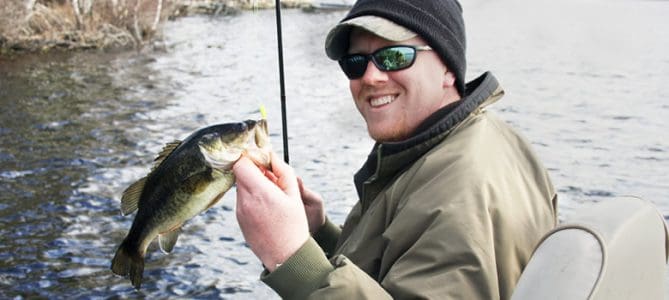
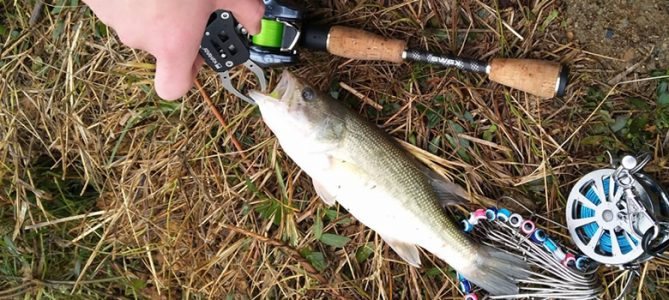
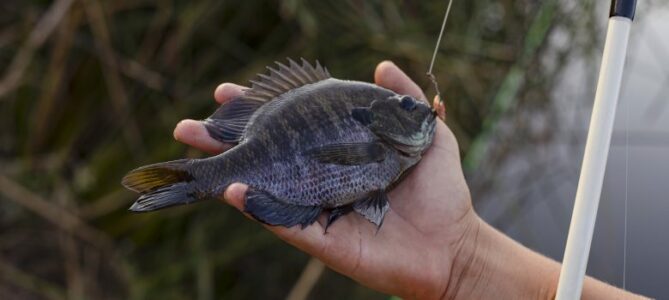
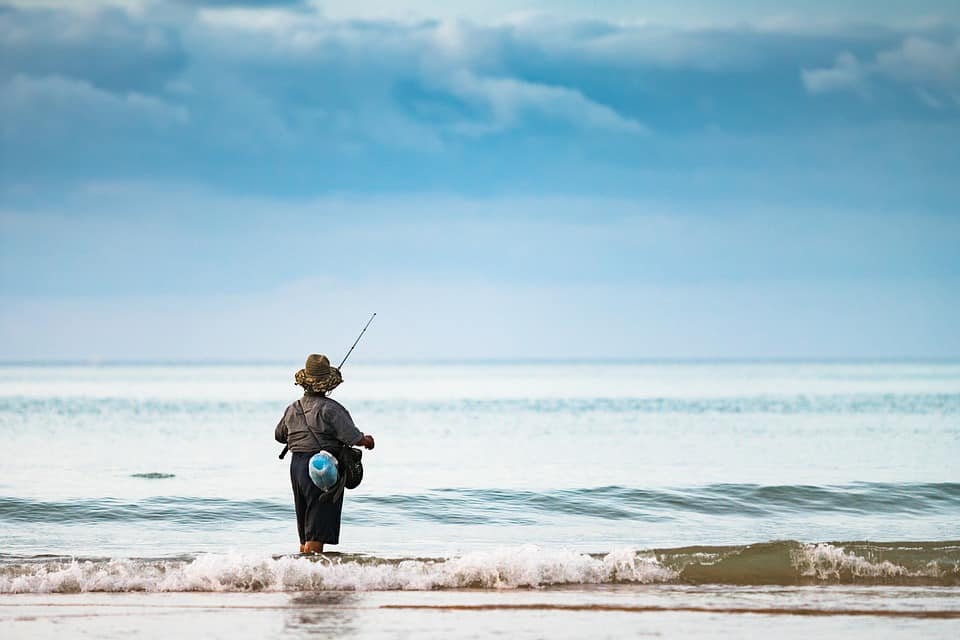
excellent and useful information………i like it